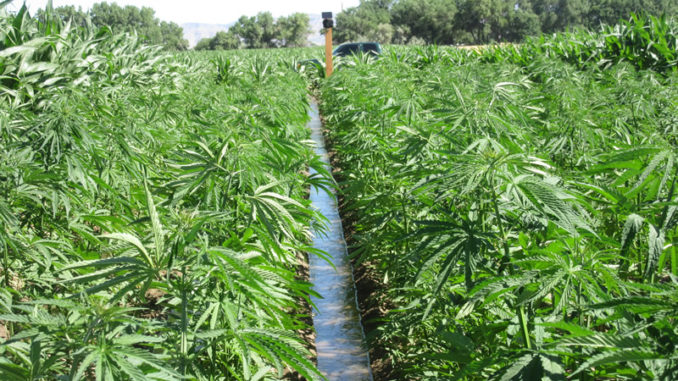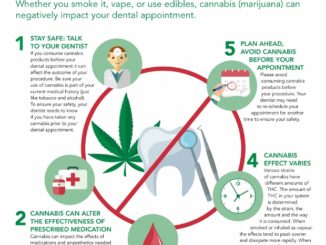
Otherwise known as Cannabis, hemp is an industrial fibre. Defined in various ways depending on which country you are in. Most countries view THC < 1% to be a non-drug form of cannabis (cannabis for drug use is usually over 10% THC). Smoking hemp is more likely to produce a headache than anything else! There are a variety of well-known uses for hemp; today we will be examining how to farm this plant legally.
Non Toxic Agriculture
Hemp growing shares many of the attributes of cannabis cultivation. Hemp and cannabis grow and look the same way. Hemp requires no pesticides or herbicides to grow successfully In comparison to cotton, this is important, as cotton crops have 24% of the world’s pesticides sprayed on them, but cotton only has a 2.4% global market share!
Yields
The crop must be grown in well-fertilised soil for a good yield. Hemp is versatile enough to grow in different soil types but grows best in sandier soils. Like many crops, the better the soil, the higher the yield. As with all plants, nutrition is gained from the soil in which the plant grows. Some believe this is what prevented hemp from remaining a mainstream crop. Mono-cultured hemp plantations can only be supported by the addition of chemicals.
Industrial hemp is ideal therefore, in crop rotation farming where a sustainable permaculture is established. With a large tap root, hemp is able to extract nutrients from deep within the soil. As the plants flower and are harvested, falling leaves mulch into useful nutrition to keep the soil healthy. The yield from a hectare of the plant is in the region of 9 tons of fibre in <100 days and 2 tons of seed in < 120 days! Using quality seeds and planting with the correct spacing is the best way to ensure an optimal yield. Latitude is an important factor to consider when choosing seed variety. Before planting the first crop, the condition of the existing soil should be assessed.
Harvesting
Determining harvest time will depend upon either the maturity of the seed or the level of defoliation. Combine harvesters are the usual method of collecting seed from the crop whereas fibre is mowed/cut. Harvest timing can be affected by the hemp variety and the type of crop required. Alternative harvesting techniques include;
Baling
The crop is collected complete and baled on-site ready for the pulping process. For fiber and hurd/shiv production, the Hemp stalk must be collected complete.
Retting
This is a naturally organic process where the hurd/shiv is separated from the fibre. It is important to get a good ret because it plays an important part in fibre quality and helps in processing. Retting can be achieved through numerous methods;
Dew retting
Water Retting
Chemical Retting
Crailar Enzyme retting
Depending on the method used it takes between 1 and 5 weeks to complete hemp retting. Achieving a good yield and high quality hemp fiber is dependent upon timing the retting correctly. Before baling and storage, the windrows should be turned so that the retting is even across the crop. Before baling and storage, the windrows should be turned so that the retting is even across the crop. A chaffer with sieve used in-field will produce roughly a 25% cross contamination of the hurd/fibre mix.
Decortication
Separation of the fibre from the hurd is called decortication and usually requires a sizeable building. To be profitable, a decortication facility has to achieve high throughput; such plants cost around $10 to build. Around the world today there are only 10 major decortication facilities. MDF production also requires a disk refiner. Textile production will usually require scotching, hackling and combing.
Harvesting Operations
Where the crop is to be utilized for textile manufacture, the stalks should be cut in the early flowering stage (before the seeds set), or if male, in the pollinating phase. Considerable lignification occurs in post-seed production plant fiber and results in hemp that can only be used in industrial non-woven applications. Considerable lignification occurs in post-seed production plant fiber and results in hemp that can only be used in industrial non-woven applications. Lower yields will result from stalks cut after seed maturity. Seed crops are gathered with a combine harvester operating at high speed, which is modified to cut the top of the plant and thresh the retained seed heads. During the harvest, a narrowed chopper can be used to reduce blockages. Combine harvesters can be conventional or axial flow; both are suitable for hemp harvests. The remaining stalks standing in the field are left to dry completely, are cut, trimmed for length and then pressed into bales.
Weather Implications
The weather at the beginning and ending of a hemp crop is critical to the success of a harvest. A lack of rain in the beginning stages significantly reduces growth. At the end of the crop, too much rain will induce a retting and rotting phase which can affect yields considerably.
Processing & Storage
A winnower can be used in-field to clean the harvested seed crop. The choice of hemp see variety will determine the clod sieve aperture. Slits at 5-6mm and elongated slots of 2mm are recommended. Without correct treatment it is difficult to remove the pericarp (husk); to produce oil with a low THC content, this is a crucial process. Hemp seed harvests should be dried until the moisture content reaches 12%, storage areas need to be dark and cool at around 4 degrees C with low humidity. This will ensure an approximate 80% germination rate for the 1st 2 years, with following years’ rates reducing considerably. The stem and small root balls remaining in the field can be tilled back into the soil adding nutrients for further crops. Hemp plants are utilized fully; parts being wither processed industrially or returned back to the soil as nutrient. Even the residues left behind from industrial processes are used to make fuel and plastics.
Proudly WWW.PONIREVO.COM
by Paul Benhaim



